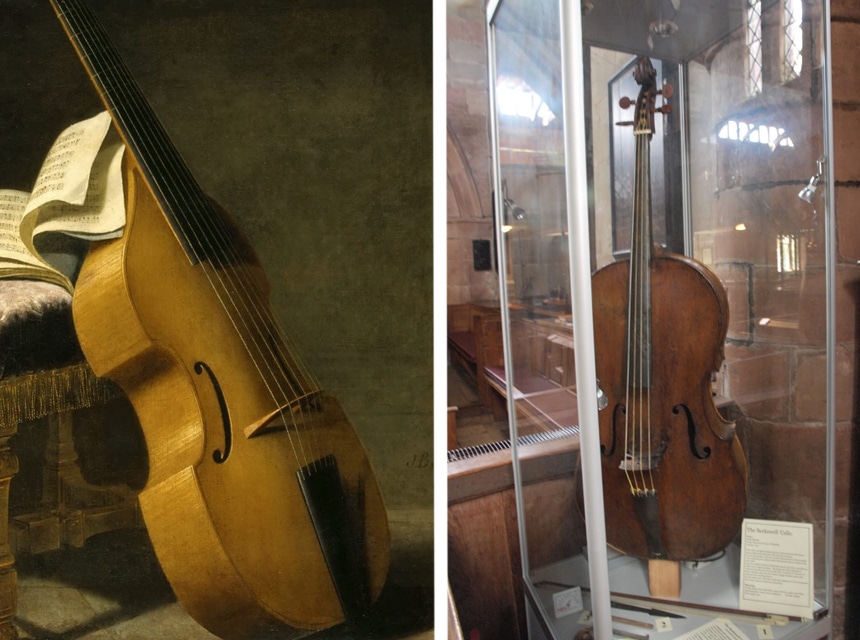The cello is a fascinating instrument with a rich history. When we see orchestral instruments in use these days it is so easy to forget about the fact that they have centuries of use behind them. In fact, there are some unique instruments that have hundreds of years of being played behind them. As well as being antiques, they’re still useful for recording and producing. So what is the history of the cello? When does the instrument date back to? In this guide, we’re exploring a brief history of the cello as well as some of the differences between cello and violin, and the other instruments that it is often confused with.
The cello is effectively a “bass” style of violin, at a lower register than the violin and the slightly higher viola, so how did these string instruments develop? Back in the 13th century people were thought to be making violins, and this has continued to grow and change. The history of the cello timeline has been disputed and debated, but the story below is generally accepted. The instrument evolved from the 1600s into the cello size and sound we know today.

A listen to one of the amazing collections of cello music will show you that this has been around for as long as most classical music! The Bach Cello Suites history aligns perfectly with the history of the instrument itself. If you have just started out in the world of classical music, you’ll recognize many of the songs, and if you have just bought a beginner cello and you’re getting cello lessons it is likely you will eventually work towards some of these iconic cello pieces.
The cello can be dated to Northern Italy and is thought to have been created by some iconic instrument makers such as Andrea Amati and Gasparo da Salo. Some of the very best cellos ever were made in this time, and new instruments within the family of instruments, effectively different versions of violins, allowed people to play in different registers.
The viola was created and altered to grow physically. The cellos couldn’t be held so people introduced stands for them, and were able to play them by resting them on the floor.
A similar instrument at the time was the Viola da Gamba, with sloped shoulders rather than the rounded shoulders of the viola or a traditional violin. A “middle-man” product, the violoncello had rounded shoulders, and eventually became known just as the cello. This is what stemmed the incredible instrument we know and love today.
The cello changed during the renaissance. Many of the songs found in the Baroque era were played with a louder type of instrument, and this larger size was to try and give a louder and more well-rounded bass sound.
A standard bass violin was also made around the 17th century. This was called the violone, but seemed to be very quickly wiped out.
Cellos started to use wire-wound strings, which more closely resemble the sort of cello strings used today. It made it easier to play solo as a cellist, and some of the most famous cellists and musicians could then make a name for themself playing these louder and clearer instruments. Out of a variety of alternatives, the cello rose to prominence.
Stradivari was a real pioneer. The original cellos he made were in between the two standard sizes used by luthiers and manufacturers. This effectively standardized the size of all of the cellos played today, and made it a more popular instrument. Around the time, famous cellist Luigi Boccherini made a name for himself. He’s thought to have been a vital part of the history of the cello as his incredible style using harmonics and seriously advanced techniques made people aspire to playing the cello.
Of course, the cello continued to grow. In the French Revolution it seems that the instruments became louder, with more responsiveness. The neck became slightly larger, and the bridge was also made more pronounced to give a higher pressure when playing.
Cello music recordings and the work that has been written for the instrument (much of it by Bach). Changes became more subtle. For instance, in the early 1900s people started to add the end pin rod to make it simpler to balance the instrument while you hold it in front of you.
This really is a brief history of the cello, there are an incredible amount of alterations that have been made over the years. When you actually look into the history of an instrument you can quickly see just how much has evolved, and cello history is no different.
Some of those early Stradivarius instruments are worth millions of dollars, and this makes them some of the most impressive and sought-after instruments out there. In the modern age of instruments, it is easier to find a quality instrument for a more affordable price tag, with some cellos available for a few hundred dollars, but it helps to know exactly where the instrument came from, and how it developed from a bass version of the violin into what is widely accepted to be a solo instrument today, played by some of the world’s most impressive musicians.